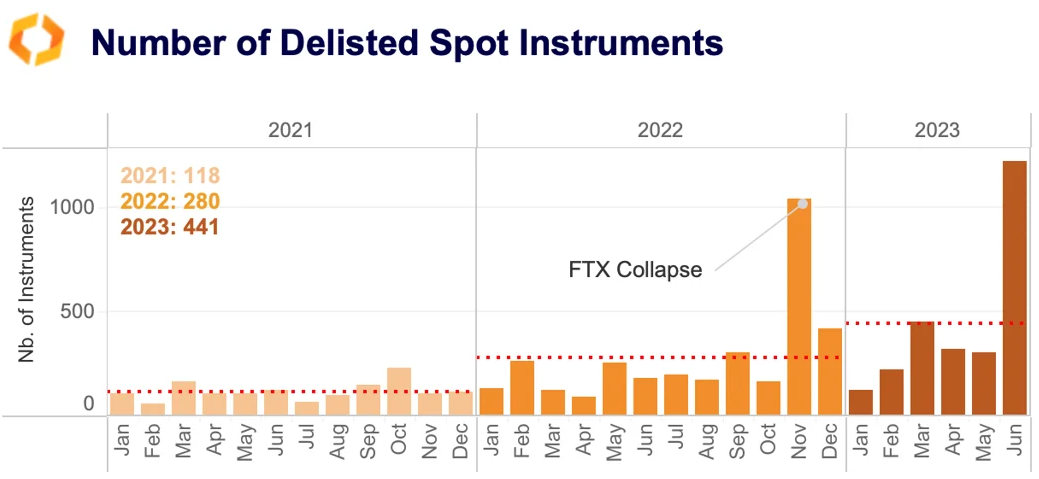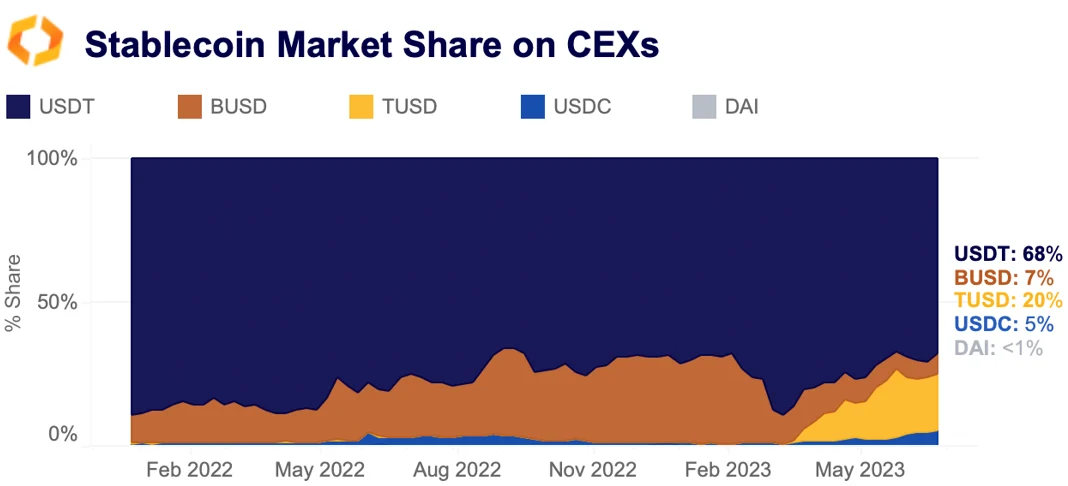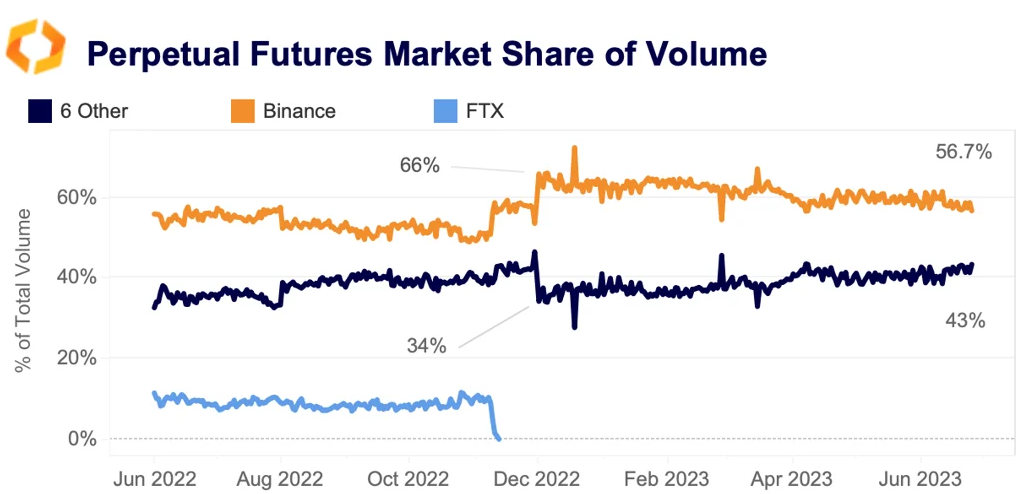A summarizing review of what has been happening at the crypto markets of the past week. A look at trending sectors, liquidity, volatility, spreads and more. The weekly report in cooperation with market data provider Kaiko.
Crypto markets are booming following a wave of ETF applications in the U.S., a welcome bullish catalyst in a much-battered region. This week, we explore:
- TUSD's soaring market share amid Prime Trust troubles
- The rising pace of delistings on exchanges
- Kraken's resilient liquidity
Why is BTC rallying?
Bitcoin briefly hit yearly highs over the weekend and is up 15% week-on-week. What's driving this rapid surge in prices? While news of a Blackrock ETF filing is certainly a bullish catalyst, let’s see what the data says.
BTC open interest recently hit its highest level since January, denominated in BTC, and one-year highs when denominated in dollars, suggesting rising inflows and speculation. This contributed to millions of short liquidations over the past seven days as prices pushed higher. ETH futures did not experience the same trend.
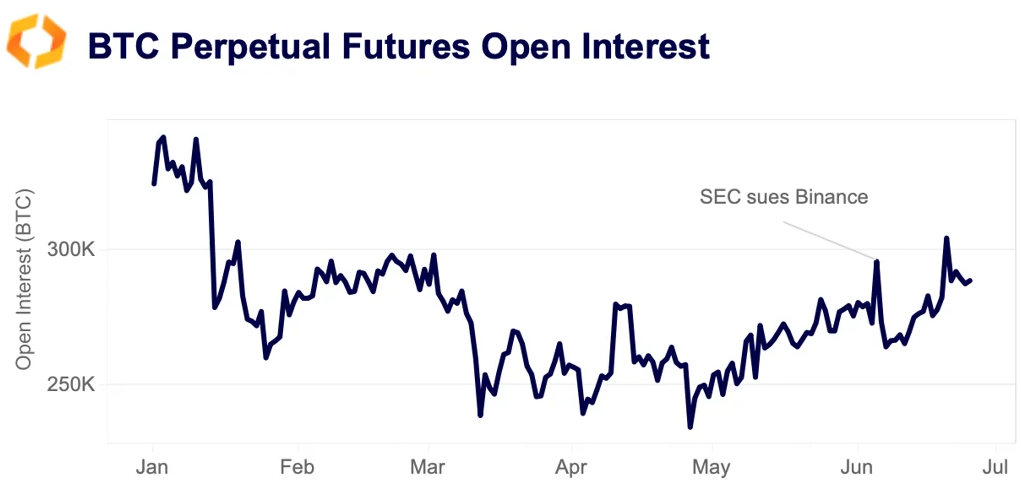
Yet, the rally does not seem to be decisively spot or derivatives-led when looking at volumes, as the spot to futures volume ratio has been mostly flat since April, which is when Binance halted most of its zero-fee BTC spot trading promotion.
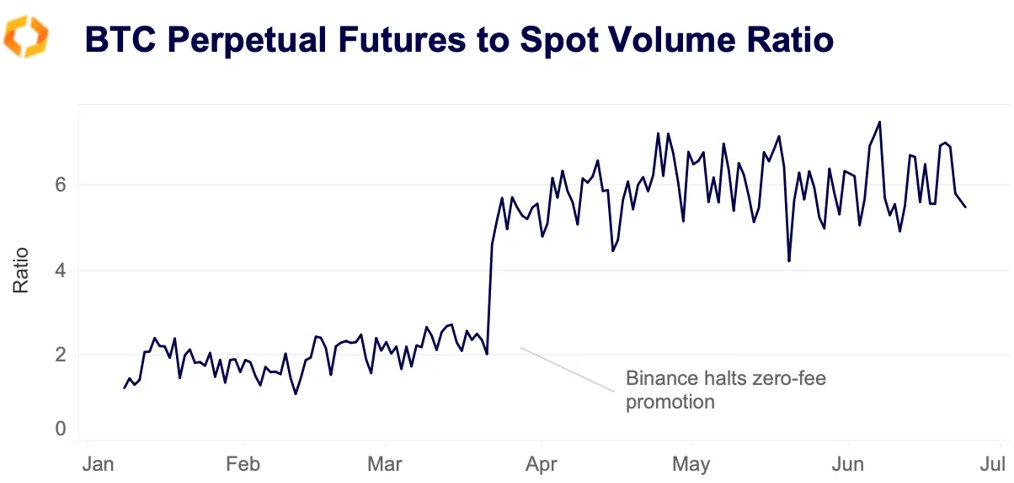
In spot markets, we noticed that the ratio of Binance to Coinbase BTC volume has fallen significantly since the SEC lawsuit. These are the two highest volume exchanges in crypto and play a significant role in price discovery. As such, rising relative Coinbase volumes could suggest this exchange is leading spot market movements since the start of June.
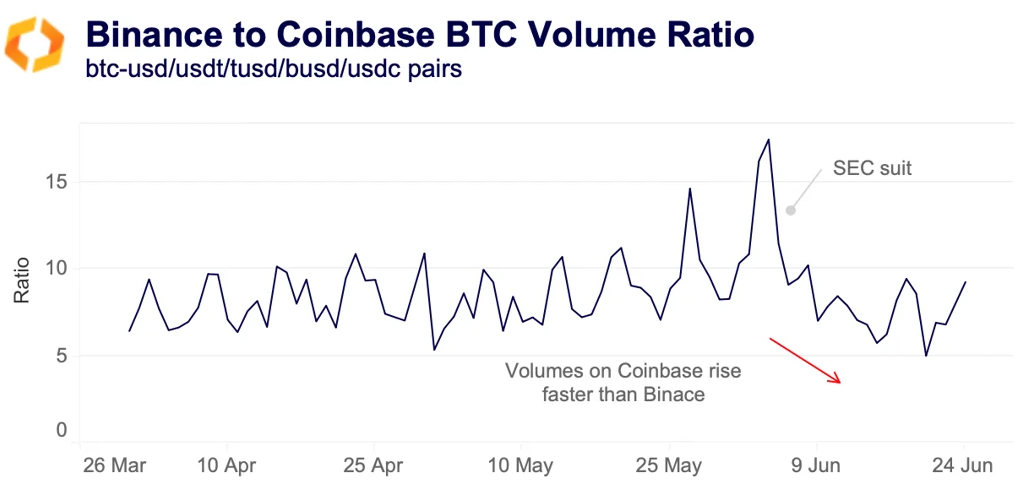
Diving further into the spot data, we can see that the ratio of BTC to altcoin volumes on U.S. exchanges is at nearly 50%. The Blackrock ETF news is particularly bullish for institutional U.S. investors, and the fact that relative BTC volumes are climbing suggests this rally is decisively BTC-led within U.S. markets. On offshore exchanges, BTC only accounts for 33% of market share.

Overall, rising BTC open interest suggests derivatives markets are playing some role in the rally, with a concentration of spot market activity on U.S. markets.
Stablecoin volatility is on the rise
Stablecoin depegging events have become increasingly common in 2023. This trend has been mirrored by a decline of the combined market cap of the top five stablecoins, which has decreased by 5% YTD. While Tether's USDT and TrueUSD's TUSD have grown, reaching all-time highs in market cap, U.S.-regulated stablecoins like BUSD and USDC have witnessed significant outflows.
Amidst a staggering 272% increase in market cap, TUSD-USD pair volatility has surged the most, which can be attributed to its limited trading availability. TUSD only trades against the dollar on Bitfinex and CEX.IO. The TUSD-USDT price ratio has been more stable since Binance began promoting the stablecoin in March, but recently experienced volatility amid news that its technology partner, Prime Trust, halted mints.
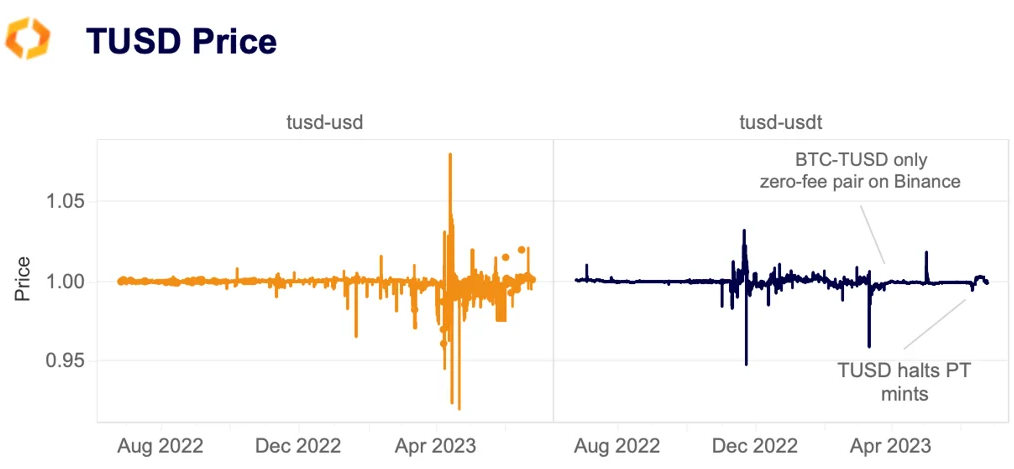
Stablecoin volatility is almost always linked to news around a specific stablecoin, such as when Circle halted USDC redemptions during the March banking crisis. However, volatility often overflows into other stablecoins via stablecoin trading pairs.
The number of delistings hits multi-year high
In June, the number of delisted spot instruments reached a multi-year high, surpassing the previous peak seen in November 2022 during the collapse of FTX and FTX.US. While delistings have been steadily increasing, with monthly figures doubling each year since 2021, the trend has significantly accelerated in 2023.
The majority of spot instruments were delisted from offshore exchanges, such as Huobi and HitBTC. However, the proportion of delistings on U.S.-based platforms has risen to 22% in 2023, up from 8% the previous year, primarily driven by Bittrex and Binance.US. Both exchanges have faced charges by the U.S. SEC for violating securities laws. Last week, Binance.US announced it would delist most USD pairs and transition to a crypto-only exchange.
The drop in global liquidity has also accelerated the pace of delistings. With less capital for market making, exchanges are opting to remove thinly traded instruments.
TUSD continues to soar despite redemption troubles
TUSD has quickly become the second largest stablecoin by trade volume, surpassing BUSD just one month after Binance started promoting the stablecoin in March. This rapid surge is almost entirely driven by Binance's zero-fee BTC-TUSD trading pair. Today, global TUSD-denominated trade volume accounts for 20% market share among other stablecoins, up from practically zero pre-Binance listing.
Yet, TUSD is facing a growing crisis of confidence after Prime Trust, a U.S.-based custodian, halted redemptions last week. The stablecoin claims to have no exposure, but this hasn't stopped traders from shorting it.
Despite the surge in TUSD volumes, market depth has lagged, which suggests market makers are cautious to hold this high-risk stablecoin. Low liquidity poses a significant risk for the exchange in the event that TUSD loses its peg. The market depth for top altcoin pairs denominated by TUSD has decreased by nearly half in June compared to May, amounting to approximately $400k.

To enhance TUSD liquidity, Binance recently announced that it is expanding its TUSD maker zero-fee promotion to all TUSD pairs, a move designed to shore up low liquidity for altcoin markets. Daily trade volumes have surged, hitting as high as $11mn, almost 40 times the market depth, following the Prime Trust announcement on June 10.
Kraken bucks global liquidity trends
Kraken seems to be flying the flag for U.S. crypto liquidity. Kraken is the only exchange we cover that has increased its market depth since the start of the year. All other U.S.-available exchanges have experienced a sharp drop in liquidity.
Bittrex, Binance.US and OKCoin have seen their market depth drop the most for the top 10 tokens, with Bittrex depth down 68%, while Binance.US and OKCoin are both down 85% year to date. OKCoin suspended USD deposits after the banking crisis in March and Bittrex recently filed for bankruptcy. Kraken has largely avoided the regulatory crackdown, although it was forced to shutter its ETH staking service earlier this year.
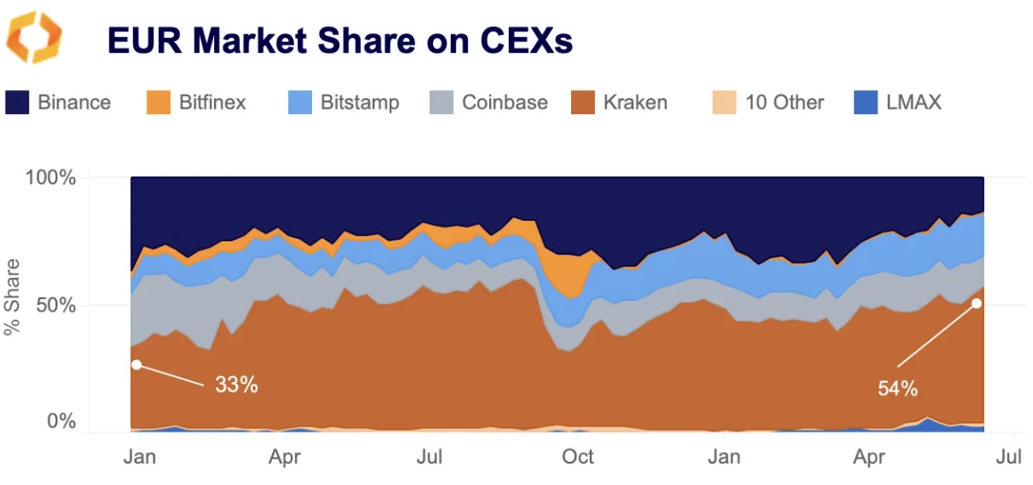
The good news continues for Kraken when zooming in on EUR market share of volumes, as it has improved its share from 33% to 54% this year. The increase in share for Kraken has largely been at the expense of Binance and Coinbase. Bitstamp has also seen a significant increase in its share of volumes.
Binance market share drops to pre-FTX lows
Binance’s share of perpetual futures volumes has been on a steady decline in 2023. Since the CFTC took up a case against Binance futures markets, the exchange has struggled to capture the same market share it did towards the end of last year. Starting the year at 66% of perpetual volumes, Binance has lost nearly 10% market share YTD, clocking in at 56.7% today. OKX was a big winner out of the ‘Other’ exchanges, with its market share up from 21% to 26% YTD.
Bitcoin's correlation with Nasdaq plummets
Bitcoin’s correlation with the tech-heavy Nasdaq 100 collapsed to just 3% in June, hitting its lowest level in nearly three years. Bitcoin outperformed tech equities this month jumping by nearly 14% while the Nasadq 100 is up only 3%. Overall, its correlation with traditional risk assets has steadily weakened this year from an average of 60% in 2022.



